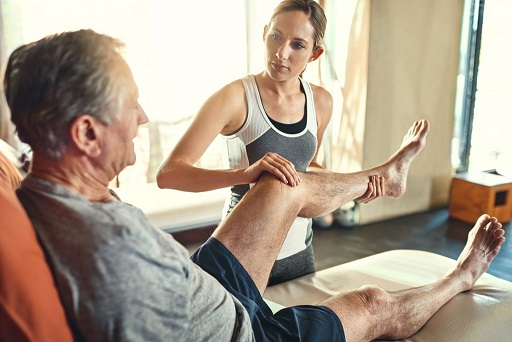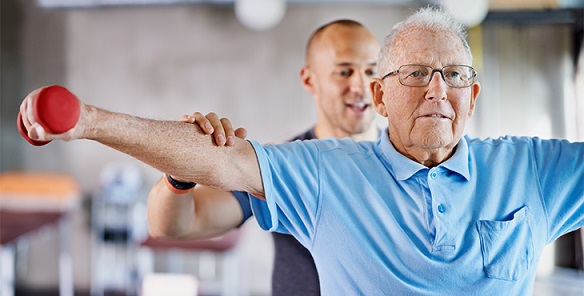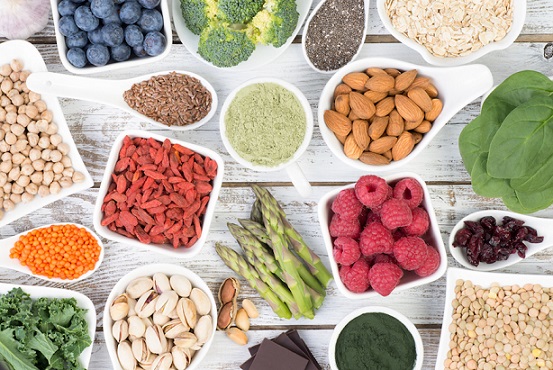What is Arthritis?
Arthritis is a very common but now well understood by most. There are more than 100 types of arthritis and different type of condition. According to a research, more than 50 million adults and 300,000 children have some type of arthritis. It is most common among women and occurs most frequently as people get older (adults over the age 65).
Arthritis is a joint disorder featuring inflammation. A joint is an area of the body where two different bones meet. Arthritis literally means inflammation of one or more joints. Two of the most common types of osteoarthritis (OA) and rheumatoid arthritis (RA).

Arthritis Treatments Options
As yet, there are actually no so call “cure” for most of the arthritis diseases, though many condition can be effectively controlled.
Treatments must be tailored to the needs of each individuals, because the type, severity and impact of arthritis varies from person to person. You and your health care professionals will need to balance the risks and benefits of each treatment, based on your personal needs and circumstances.
Arthritis treatment focuses on relieving symptoms and improving joint function. There are actually different types of treatment, ways and different combination of treatment to relief your arthritis pain.
Treatment No 1: Loose Weight
Obesity is one of the reason that cause arthritis. It puts a lot of weight and stress especially your hips, back and knees.
Reducing your weight and stress on your joints by posing weight can actually bring a big benefit as it can improve your mobility, prevent future damage and also decrease pain.
Some people will see their symptoms and disappear if they lose a total of 10 to 20 pounds.
Treatment No 2: Medications For Arthritis
Below medications are treated depending on the type of arthritis. Below are the commonly use medications for arthritis.
Analgesics
Analgesics also known as painkillers such as paracetamolreduce pain. These medications help reduce pain, but have no effect on inflammation. Analgesic is an agent that produces diminished sensation to pain without loss of consciousness. It’s best to take them before an activity that’s likely to aggravate the pain rather than wait until your pain is very bad. Examples include acetaminophen (Tylenol, others), tramadol (Ultram, Ultracet, others) and narcotics containing oxycodone (Percocet, Oxycontin, others) or hydrocodone (Norco, Vicoprofen, others).
Aspirin and acetaminophen are the oral analgesics of first choice in the treatment of mild to moderate pain caused by cancer.
—William T. McGivney et al.
Nonsteroidal anti-inflammatory drugs (NSAIDs)
NSAIDs reduce the swelling as and stiffness, as well as relieving pain. They reduce inflammation, but also are helpful in type of arthritis where inflammation is not the main problem (for example osteoarthritis).
Over-the-counter NSAIDs include ibuprofen (Advil, Motrin IB, others) and naproxen sodium (Aleve). Some types of NSAIDs are available only by prescription. Oral NSAIDs can cause digestive problems (stomach upsets, indigestion or damage to the lining of the stomach) so in most cases NSAIDs will be prescribed along with a drug called a proton pump inhibitor (PPI), which will help to protect the stomach. NSAIDs may also increase your risk of heart attack or stroke. Different forms of NSAIDs carry a varying degree of risk. Some NSAIDs are also available as creams or gels, which can be rubbed on affected joints.
Disease modifying anti-rheumatic drugs (DMARDs)
DMARDs suppress inflammation and treat the underlying disease. DMARDs is one if the treatment that suppress inflammation disease and may also improve the outcome. It may be several weeks before they have any effect, so anti-inflammatory drugs are usually used alongside them.
DMARDs are often used to treat rheumatoid arthritis as it has the function to slow or stop your immune system fro attacking your joints. Examples include methotrexate (Trexall) and hydroxychloroquine (Plaquenil).

Treatment No 3: Physical Activities a.k.a. Exercise
Even though you may not feel like doing it but actually EXERCISE is one of the best thing you can do to relief arthritis pain and lessen joint damage. There are more benefits to exercise than just weight loss. The main reason that arthritis patient must do more physical activities a.k.a. exercise is because regular movement helps to maintain flexibility in your joints.
Most of the people used to think exercise make arthritis worse, but the opposite is true. Is false!!! (unless you are pounding the pavement)
There is actually some exercise that you should try to get on to put less stress on your joints which are stretching, strength training, aerobics, walking swimming or even biking.
A small tips here: Runners with knee osteoarthritis should cut down on mileage, try to cross-train, and run on softer surfaces like tracks and dirt paths.
Treatment No 4: Therapy
Doctor will actually often recommend their patient to do physical therapies for their arthritis. Physical therapy can be helpful for some types of arthritis. This may include or any or all of the following below:
Physiotherapy
Physiotherapy is a type of treatment of disease, injury, or deformity by physical methods such as massage, heat treatment and rather than by surgery or drugs.
Physiotherapy helps to improve your general fitness and muscle strength, through specific exercise. It may be combined with pain-relieving treatments such as ice or heat pack or massage.
Occupational Therapy
Occupational Therapy is the use of particular activities as an aid to recuperation from physical or mental illness.
Occupational Therapy practical advice on managing everyday tasks, protecting your joints from different damage and choosing specialized aids and equipment.
Hydrotherapy
Hydrotherapy also known as hydropathy is the use of exercise in a warm-water pool as part of treatment for condition such ad arthritis. The water supports your weight and therefore puts less measure on your joints and muscle.

Therapy No 5: Natural Remedies
Some herbs and supplements such as capsaicin, flaxseed, ginger and gingko are good for arthritis. But the most popular natural remedy which is good for arthritis is turmeric.
Turmeric is a bright yellow that aromatic that can be found from the rhizome of a plant of the ginger family, used for flavoring and coloring in Asian cooking. Turmeric contains a chemical, curcumin that may help to reduce arthritis pain. It also contain anti-inflammatory properties.
Studies have shown that they may provide modest pain relief and could be tried if you are unable to tolerate other pain medications. Other natural remedies that could help to relief arthritis pain are acupuncture, massage, ice packs and heating pads. Reducing stress by maintaining a positive outlook may also help!
Therapy No 6: Acupuncture
Acupuncture is a system of complementary medicine in which fine needles are inserted in the skin at specific points along what are considered to be lines of energy (meridians), used in the treatment of various physical and mental conditions.
“Several trials shown acupuncture to be helpful for many people with osteoarthritis,” says Doctor Altman. “It’s not helpful for everybody”
Many people found that acupuncture helps relieve pain and disability due to arthritis, but it may not work for some.
Therapy No 7: Surgery
If you had tried a number of remedies and got no relief or only a temporary reprieve, your doctor may suggest surgery. Surgery may be necessary and advisable if the damage to your joint is severe enough to cause difficulties in your everyday life.
Joint replacements are now very sophisticated and successful. Many different joints including hip, knee, shoulder and elbow, are routinely replaced with advanced arthritis. There are also a number of other pain-relieving or reconstructive operation which can be helpful.
The most common surgery for joint are:
Joint Replacement
Joint replacement also known as joint arthroplasty is performed most frequently to replace hip joints and knee joints, and involves the complete removal of the damaged joint and tissues to be replaced with an artificial prosthesis.
Joint Fusion
Joint fusion surgery also known as arthrodesis. This procedure fuses or “welds” together the two bones that make up your arching joint. It causes bones to become one solid bone, and it can lessen your pain. It can also make your joint more stable and help you bear more wight on it.
Joint Repair
In some instances, joint surfaces can be smoothed or realigned to reduce pain and improve function. These types of procedures can often be performed arthroscopically — through small incisions over the joint.